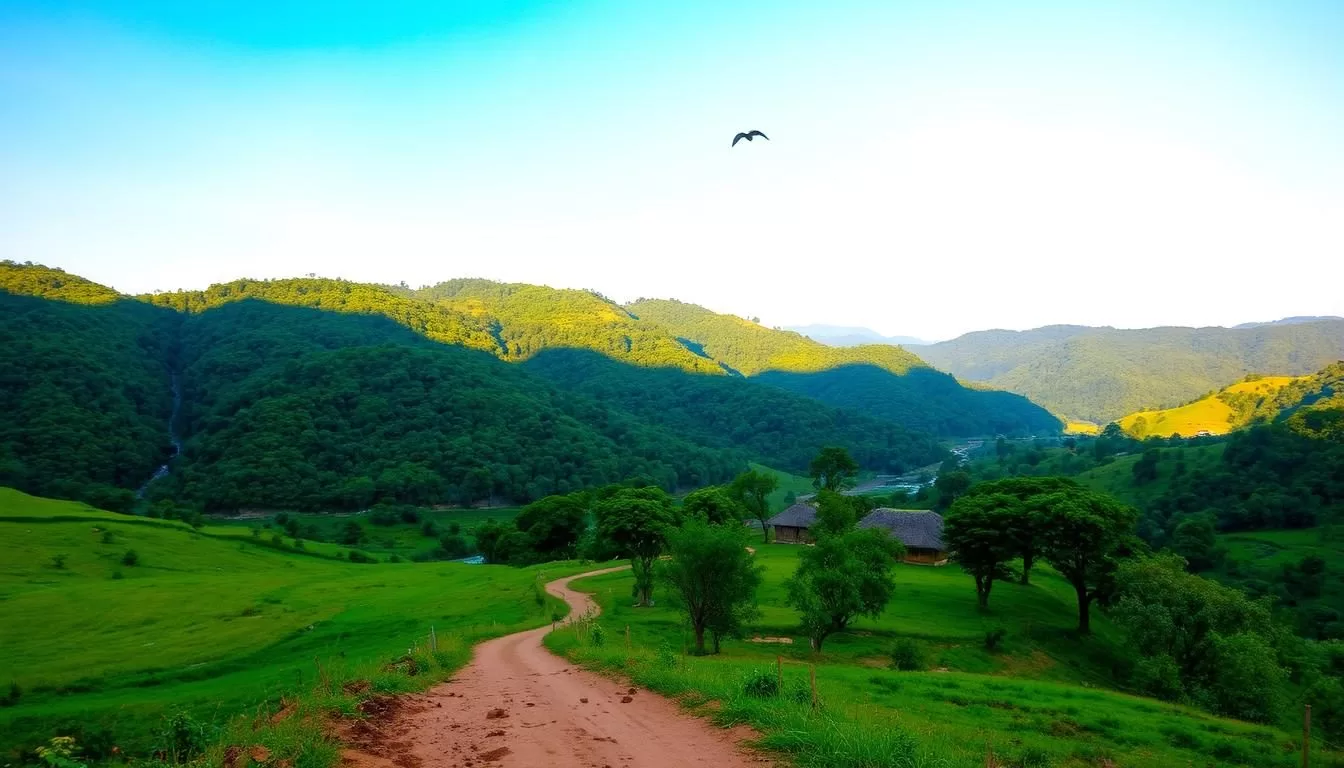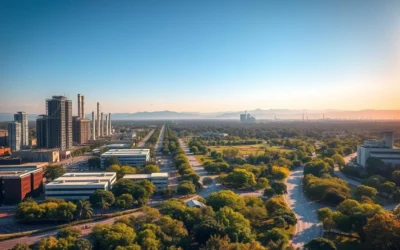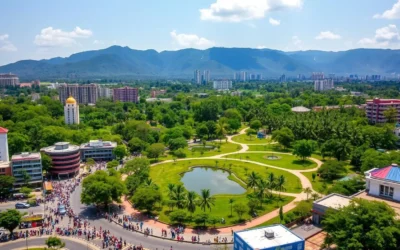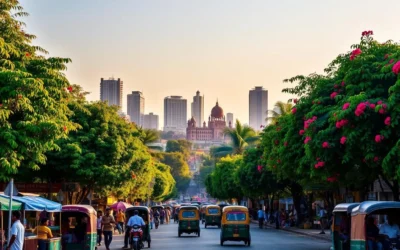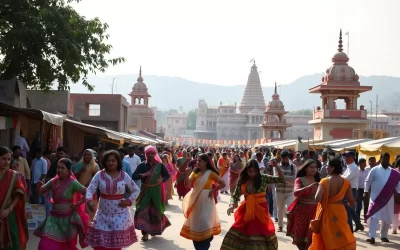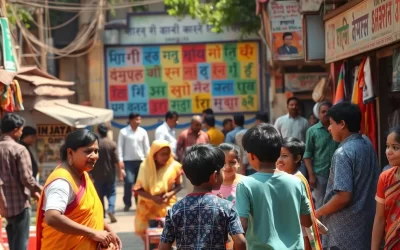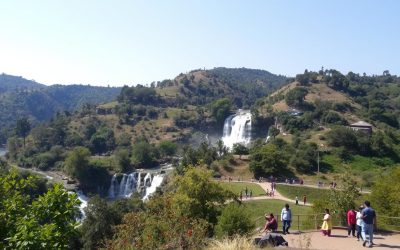✓ Accommodations✓ Flights✓ Rental Cars
Nestled in the eastern part of India, Jharkhand is a treasure trove of natural wonders, rich tribal heritage, and breathtaking scenery.
With its diverse landscapes, including lush forests, serene lakes, and wildlife sanctuaries, Jharkhand offers a perfect escape for nature enthusiasts, adventure seekers, and cultural explorers alike.
Understanding the weather patterns in Jharkhand is crucial for planning a successful holiday. The state’s climate significantly impacts the accessibility of its attractions and your comfort level during the visit.
As you plan your trip to this beautiful region, knowing the best time to visit will help you make the most of your travel experience.
Understanding Jharkhand’s Climate and Geography
Understanding the climate and geography of Jharkhand is crucial for planning a trip. You need to know what to expect from the weather and how it impacts your travel plans. Jharkhand, a state in eastern India, experiences a diverse range of climates and geographical features.
Geographical Features Influencing Weather Patterns
Jharkhand’s geography plays a significant role in shaping its climate. The state’s terrain includes forests, hills, and rivers, which influence the temperatures and humidity levels throughout the year. The varied landscape contributes to the diverse weather patterns you experience during different times of the year.
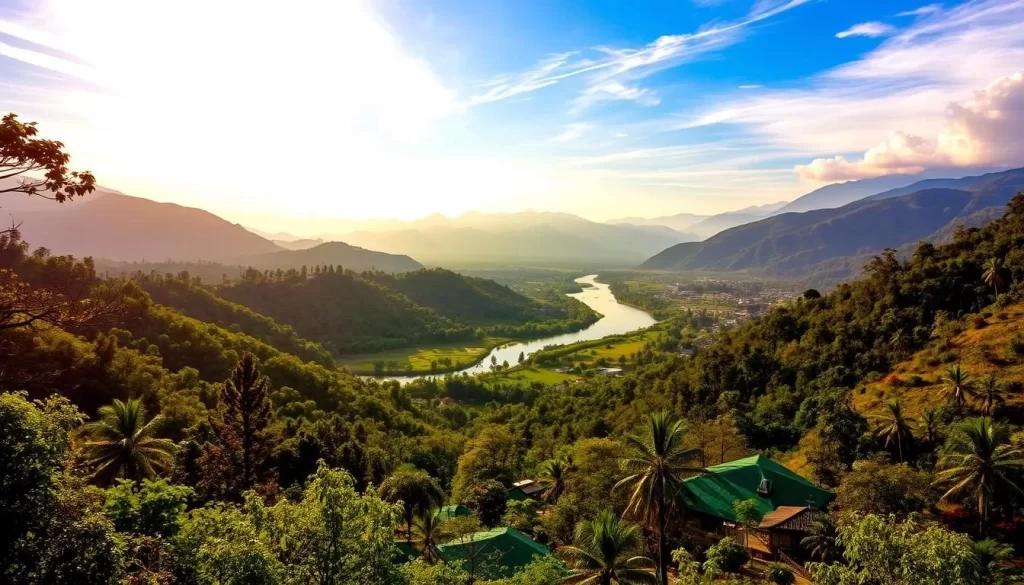
Overview of the Three Distinct Seasons
Jharkhand’s climate is characterized by three distinct seasons: Summer, Monsoon, and Winter. Here’s an overview:
| Season | Time | Temperature Range | Characteristics |
|---|---|---|---|
| Summer | March to June | 25°C to 40°C | High temperatures, increasing humidity |
| Monsoon | July to September | 20°C to 30°C | Moderate to heavy rainfall, lush greenery |
| Winter | October to February | 5°C to 25°C | Pleasant temperatures, clear skies, minimal rainfall |
Each season offers a unique experience, making Jharkhand a versatile destination. The best time to visit depends on your preferences and what activities you have planned. Whether you’re looking for adventure, relaxation, or cultural experiences, Jharkhand has something to offer during any time of the year.
Winter in Jharkhand: The Golden Season (October-February)
From October to February, Jharkhand is bathed in the golden glow of winter, offering a perfect blend of cultural immersion and outdoor adventures. This period is considered the best time to visit Jharkhand, as the weather is pleasant, making it ideal for travel and exploration.
Temperature Ranges and Clear Skies
During winter, Jharkhand experiences a significant drop in temperature, with average lows ranging from 10°C to 15°C. The clear skies and comfortable weather conditions make it an ideal time for tourists to enjoy the scenic views and visit various places across the state.
Top Winter Destinations and Activities
Winter is an excellent time to explore Jharkhand’s natural beauty and cultural heritage. Tourists can visit popular destinations like the Betla National Park, the scenic waterfalls of the Ranchi district, and the ancient temples of Hazaribagh. Outdoor activities such as trekking, camping, and wildlife safaris are also popular among tourists during this season.
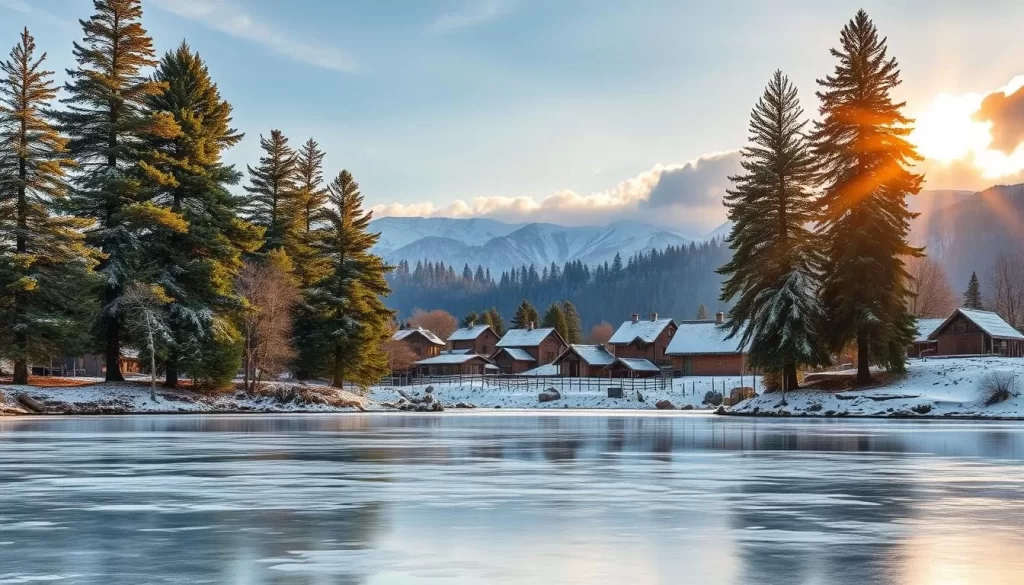
Winter Festivals and Cultural Experiences
Jharkhand turns much more celebratory with the onset of winter. The Tusu Parab, which occurs in January, is a major festival celebrated by most tribal communities. You get to experience amazing cultural performances, colorful processions, and traditional music. Some of the cultural experiences during winter include:
- Participating in traditional tribal ceremonies
- Sampling local cuisine
- Purchasing authentic handicrafts directly from artisans
- Enjoying traditional dance forms like Chhau, Karma, and Jhumar
| Festival/Event | Month | Description |
|---|---|---|
| Tusu Parab | January | Major tribal festival with cultural performances and processions |
| Chhau Dance Performances | December to February | Traditional dance form showcasing tribal culture |
| Local Fairs | October to February | Opportunities to sample local cuisine and purchase handicrafts |
Winter in Jharkhand is a treat for those who enjoy cultural immersion and comfortable weather conditions. It’s a great time to experience the rich heritage of the state.
Summer Exploration in Jharkhand (March-June)
Summer in Jharkhand, spanning from March to June, offers a unique blend of adventure and cultural experiences. As the region heats up, the mornings and evenings become ideal for exploring the outdoors.
Managing the Heat: Temperature Patterns
The summer months in Jharkhand are characterized by rising temperatures, often reaching their peak in May and June. However, the early mornings and late evenings remain relatively pleasant, making them the best times to visit popular trekking spots like Parasnath Hills.
| Month | Average Temperature | Recommended Activities |
|---|---|---|
| March | 25°C – 30°C | Trekking, Cultural Festivals |
| April | 30°C – 35°C | Adventure Activities, Sarhul Festival |
| May | 35°C – 40°C | Early Morning Trekking, Water-based Activities |
Wildlife Sanctuaries at Their Best
Despite the heat, summer is a great time to visit Jharkhand’s wildlife sanctuaries. The dry conditions make it easier to spot wildlife, and the lush surroundings provide a serene atmosphere. You can explore the various parks and sanctuaries, enjoying the region’s rich biodiversity.
Summer Adventure Activities and Festivals
Summer in Jharkhand is not just about the heat; it’s also a time for adventure and cultural celebration. You can enjoy rock climbing, rappelling, and hiking at locations like Jonha Falls and Hundru Falls. The Sarhul festival, celebrated in March-April, is a vibrant cultural experience that showcases the region’s rich heritage.
As the summer progresses, water-based activities become increasingly popular, with locals and visitors seeking relief at Jharkhand’s numerous waterfalls and lakes. Summer evenings often feature local cultural programs and traditional performances in major towns, providing entertainment options after the day’s heat subsides.
Monsoon Magic in Jharkhand (July-September)
The monsoon magic in Jharkhand is a spectacle to behold, with rain-kissed mountains and verdant forests. As the monsoon sets in, the state’s landscape transforms, offering a serene and picturesque environment for travelers.
Rainfall Patterns and Lush Landscapes
Jharkhand experiences significant rainfall during the monsoon season, resulting in lush landscapes and rejuvenated water bodies. The rain enhances the state’s natural beauty, making it a great time to visit for those who enjoy the scenery and tranquility.
The average rainfall during this period is considerable, contributing to the state’s lush greenery. The monsoon season is a time of renewal, and Jharkhand’s landscapes are particularly breathtaking during this time.
Spectacular Waterfalls and Scenic Drives
The monsoon season brings spectacular waterfalls to life, and Jharkhand is home to many such attractions. The rain makes the waterfalls more vibrant, creating a perfect setting for scenic drives and exploration.
- Some of the notable waterfalls in Jharkhand include Jonha Falls, Sita Falls, and Dassam Falls.
- The scenic drives through the state’s rolling hills and forests are particularly enjoyable during the monsoon.

Monsoon Travel Challenges and Solutions
While the monsoon season offers many attractions, it also presents certain challenges, such as road flooding and landslides in hilly areas. However, with proper planning and preparation, travelers can mitigate these issues.
- Carrying appropriate rain gear and waterproof bags for electronics is essential.
- Many resorts offer special monsoon packages, including discounted rates and indoor activities.
- Strategic planning, such as allowing buffer days in your itinerary, can help manage the unpredictability of monsoon weather.
By being prepared and flexible, you can enjoy Jharkhand’s monsoon beauty while minimizing the challenges associated with traveling during this time.
Jharkhand, India: Best Months for a Weather-Savvy Trip by Activity
The best time to visit Jharkhand depends on what you want to do, whether it’s trekking, wildlife safaris, or exploring cultural festivals. Understanding the optimal seasons for your preferred activities can significantly enhance your travel experience.
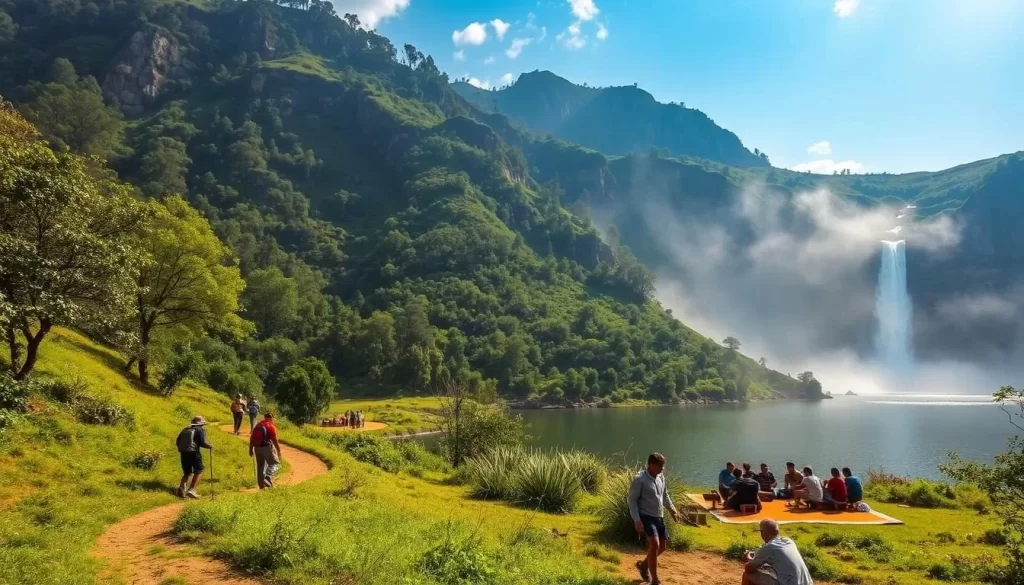
Optimal Times for Trekking and Outdoor Adventures
For trekking and outdoor adventures, the best time is from October to February, when the weather is cool and pleasant. The clear skies and comfortable temperatures make it ideal for exploring Jharkhand’s natural beauty, including its hills, forests, and waterfalls.
Best Months for Wildlife Safaris and Photography
If you’re interested in wildlife safaris and photography, the period from March to June is recommended. Although it’s summer, the heat drives animals to water sources, making them easier to spot. Early morning and evening safaris are advisable to avoid the midday heat.
Ideal Seasons for Cultural Tourism and Festivals
Cultural tourism and festivals are best experienced during the winter season, from October to February. Jharkhand celebrates various festivals during this time, such as the Sarhul festival, offering a rich cultural experience. The pleasant weather also makes it easier to explore historical sites and participate in local events.
Off-Season Travel: Benefits and Considerations
Traveling during the off-season, particularly during the monsoon (July-September), can offer several benefits, including fewer crowds and lower accommodation rates. However, it requires flexibility and appropriate gear. The lush landscapes and dramatic waterfalls during this time are a treat for nature lovers.
By choosing the right time based on your interests, you can have a more enjoyable and fulfilling trip to Jharkhand. Whether you’re looking for adventure, cultural immersion, or relaxation, Jharkhand has something to offer throughout the year.
Planning Your Perfect Jharkhand Getaway: Weather-Based Recommendations
With its varied geography and climate, Jharkhand offers unique experiences across different seasons, making it essential to choose your travel time wisely. The state’s diverse landscape means that the best time to visit depends on your preferences and the activities you have planned.
While Jharkhand is a year-round destination, October to February stands out as the overall best time to visit, with pleasant temperatures ranging between 5°C and 25°C. This period is ideal for sightseeing, wildlife exploration, and outdoor activities without the discomfort of extreme heat or rain.
For specific interests, consider the following optimal times: wildlife enthusiasts should plan their trip during March-April or November-February for the best experiences in parks like Betla National Park. If you’re chasing waterfalls, the monsoon months (July-September) offer spectacular views, while cultural travelers will find January-February and March-April rewarding for tribal festivals.
Budget-conscious travelers can benefit from off-season rates during the monsoon or early summer, balancing weather compromises with significant savings. For trekking and outdoor adventures, winter months (November-February) provide optimal conditions with clear skies and moderate temperatures.
Regardless of when you visit, plan your daily activities according to the seasonal patterns to make the most of your trip. By doing so, you’ll be able to enjoy Jharkhand’s natural beauty, cultural richness, and adventure opportunities to the fullest, making your holiday truly unforgettable.
The above is subject to change.
Check back often to TRAVEL.COM for the latest travel tips and deals.
